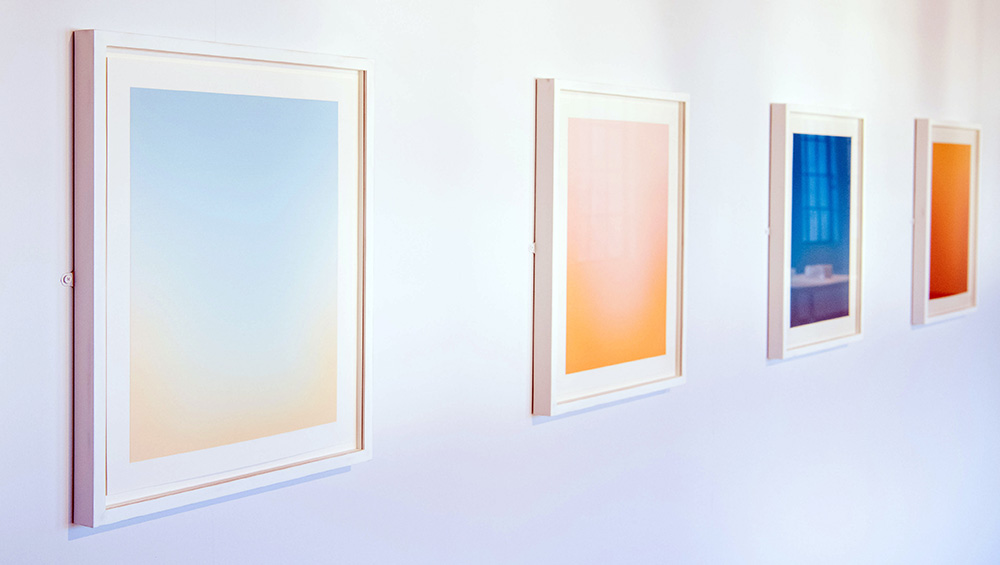
Beneath the Surface, installation view, City Art Centre, Edinburgh. Photo: Ian Georgsson.
City Art Centre, Edinburgh
16 November 2019 – 1 March 2020
by CHRISTIANA SPENS
Beneath the Surface, a survey of modern Scottish abstract art, curated by Maeve Toal, is a refreshingly meditative exhibition that demands patience, silence and space – a relaxed submission to a visual language that makes little sense or impact at first glance, but which, if given in to, provides space to think and blur into the ideas of other people and places, and material surfaces themselves. To fall beneath the surface requires a leap of faith, a shedding of old habits and aesthetic comforts and stepping into a sort of void – into these artworks in which narrative and familiar shapes are deconstructed and lost – but which nevertheless inspire experiences that are compelling and unique.
Abstract, minimal art is not for everyone; perhaps it requires a certain temperament, an openness and patience that is at odds with how so many of us live our lives. But for that reason, this exhibition offers something special and rare. It also seeks to recognise the artists and the tradition they are part of which has often been sidelined, in Scotland particularly. Although, as one of the contributing artists, Kenneth Dingwall, has written, abstract art represents “the greatest change in visual language since the Renaissance,” it has not been treated as such in this domestic setting. While Scottish artists have made significant contributions to the evolution of abstract art, and several acclaimed artists are working in this tradition today, they have often found more success and support abroad than in their home country.

Eric Cruikshank. Untitled 4, 2019. © the artist.
Indeed, as is evident from the letter quoted in Dingwall’s catalogue essay, from the Scottish Gallery director George Proudfoot to artist William Johnstone in 1935, at the time of his exhibition there: “A lot of people, lay and professional, have seen your pictures, but they are beyond them … I fear that in this part of the world you can look to no future on your present line.”
This attitude has not really gone away for many people, although obviously the art world is more accommodating now, with several concurrent exhibitions in Edinburgh of acclaimed abstract art – from Garry Fabian Miller to Katie Paterson. This exhibition therefore seeks to celebrate the long tradition of Scottish abstract art, and its particular way of exploring and expressing complex and elusive thoughts and feelings.
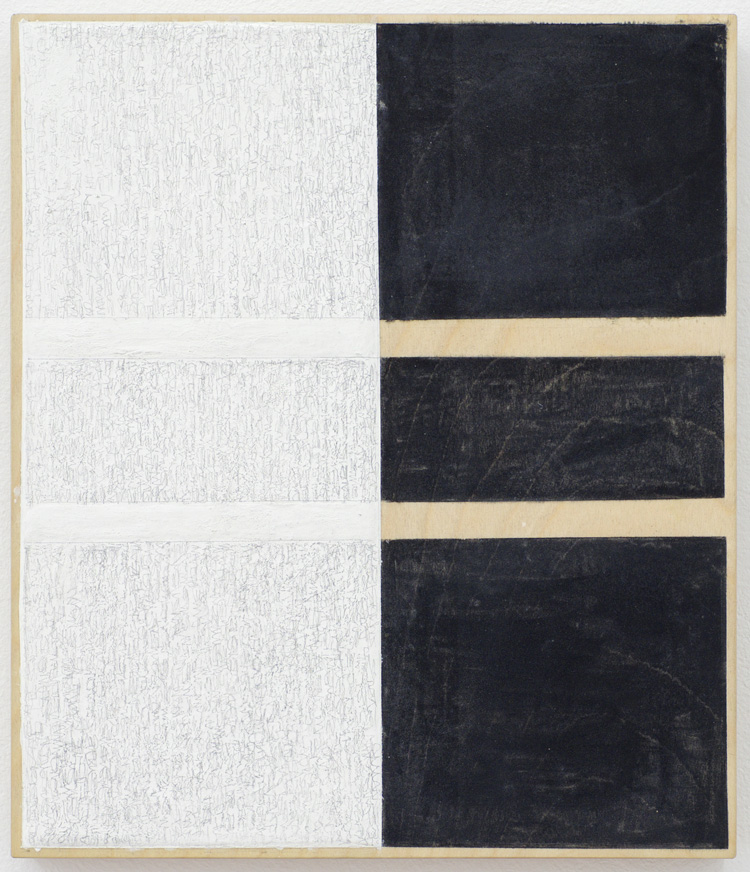
Alan Johnston. Untitled, 2014-15. © the artist.
Beneath the Surface presents nine contemporary artists based in Scotland: Sara Brennan, Michael Craik, Eric Cruikshank, Kenneth Dingwall, Callum Innes, Alan Johnston, James Lumsden, Karlyn Sutherland and Andrea Walsh. Ranging from constructions, drawings and paintings to ceramics, glass and tapestry, each artist’s work employs a minimalist aesthetic through abstraction. Dismissing – or simply moving beyond – narrative and observed reality, the artworks on show complement one another with their shared economy of gesture, using limited tonal palettes or a monochrome colour plane to produce states and spaces of contemplation.
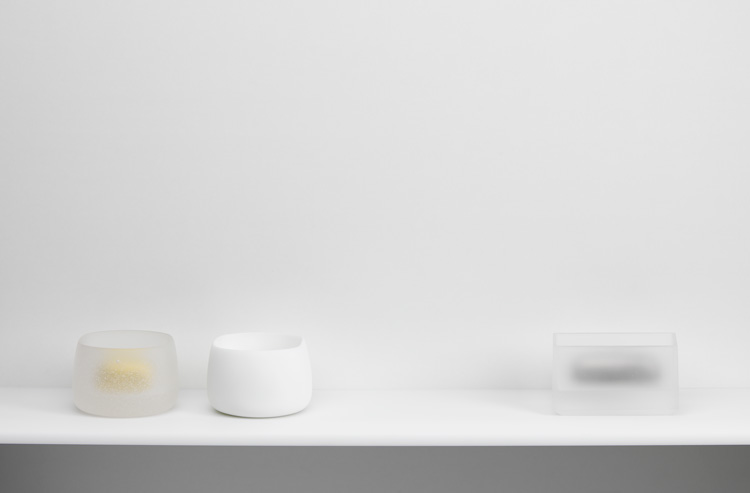
Andrea Walsh. Collection of Contained Boxes - Clear Frit, White and Clear, 2018. © the artist. Photo: Shannon Tofts.
There is fluidity between memory and subject and art – these works trigger memories of familiar places and scenes, rather than capturing them and imposing them on the viewer. They allow and suggest, rather than define and control a narrative or feeling or perspective. The effect of abstract art relies, perhaps more than other art forms, on the imagination and will of the viewer. It can be challenging, therefore, as the curator Maeve Hoal has said: “Works of such apparent simplicity sometimes attract the false perception that they require little intervention on the artist’s behalf. However, what may appear simple to the viewer often involves restraint and extended periods of time spent by the artist contemplating, reworking and refining complex ideas and processes. Early in the 20th century, the architect Mies van der Rohe advocated ‘less is more’ – stripping excess out to achieve a focused form of functionalism. In recognising these possibilities, reductive artworks have since then taken many directions in both simplified form and expressive function.”
Beyond the Surface, quite directly, asks the viewer to wait and slow down, to appreciate a different pace and dynamic. That in itself is quite subversive. It demands extra time, a closer look and a willingness to believe that there is something valuable beyond the immediately obvious.
Each artist’s work provides a slightly different way of doing this, but as I move from one to another, I feel as though I am slowing down in a way that is truly meditative and interestingly communal.
,-2019.jpg)
Sara Brennan. Old Blue Band I (Series II), 2019. © the artist. Photo: Shannon Tofts.
Brennan’s woven tapestries, Old Blue Band I (Series II) (2019) and Old Grey Band I (Series I) (2019), use old wool either inherited or sourced from disused mills, and respond to nature and landscape in an elemental, tactile manner, recalling the textures and muted tones of the Scottish countryside in a simplified and essentialist way. Sitting with the works, the colours seem to change in emphasis and balance; patience is essential, as it is in the countryside itself.
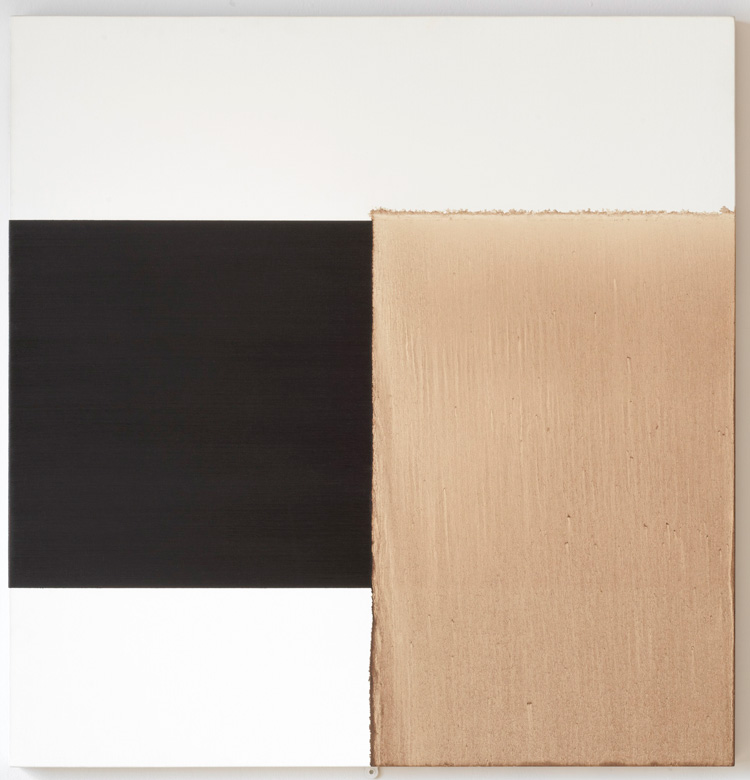
Callum Innes, Exposed Painting, Charcoal Black - Red Oxide, 2000. Image courtesy of the artist and Frith Street Gallery. Photo: Tom Nolan.
Innes also uses natural tones and textures to invoke feelings of familiarity beyond definition, in his Exposed Paintings series. Using processes of painting, washing away the paint with spirits, repainting and repeating these processes over and over again, he explores the rhythms and patterns of erosion and rebuilding that are central to so much of the local, natural world, but also to art practice itself.
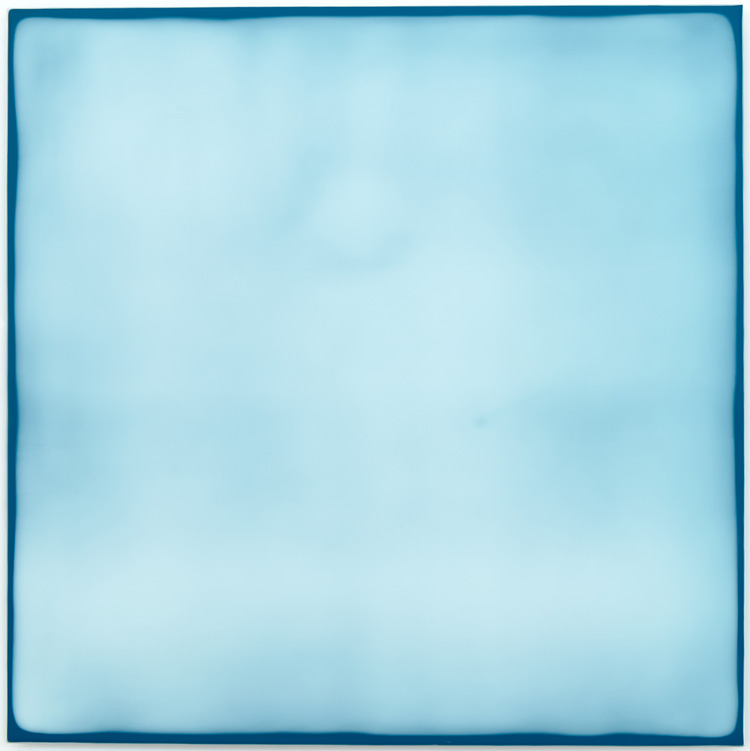
Michael Craik. Vestige 2019_43, 2019. © the artist.
Edinburgh born and Fife-based Michael Craik’s works – Vestige 2019_43 (2019) and Vestige 2019_44 (2019) – use acrylic on aluminium to explore similar ideas of erosion and the passage of time. Through painting and then sanding down the paint, he creates meditative and contemplative pieces that complement the other artists’ work. Cruikshank, Dingwall, Johnston, Lumsden, Sutherland and Walsh have all contributed similarly accomplished, quietly compelling work that together showcase the continued and substantial movement of Scottish abstract art that persists in its idealistic and intelligent offerings to those prepared to reciprocate with a little of their own time and faith.